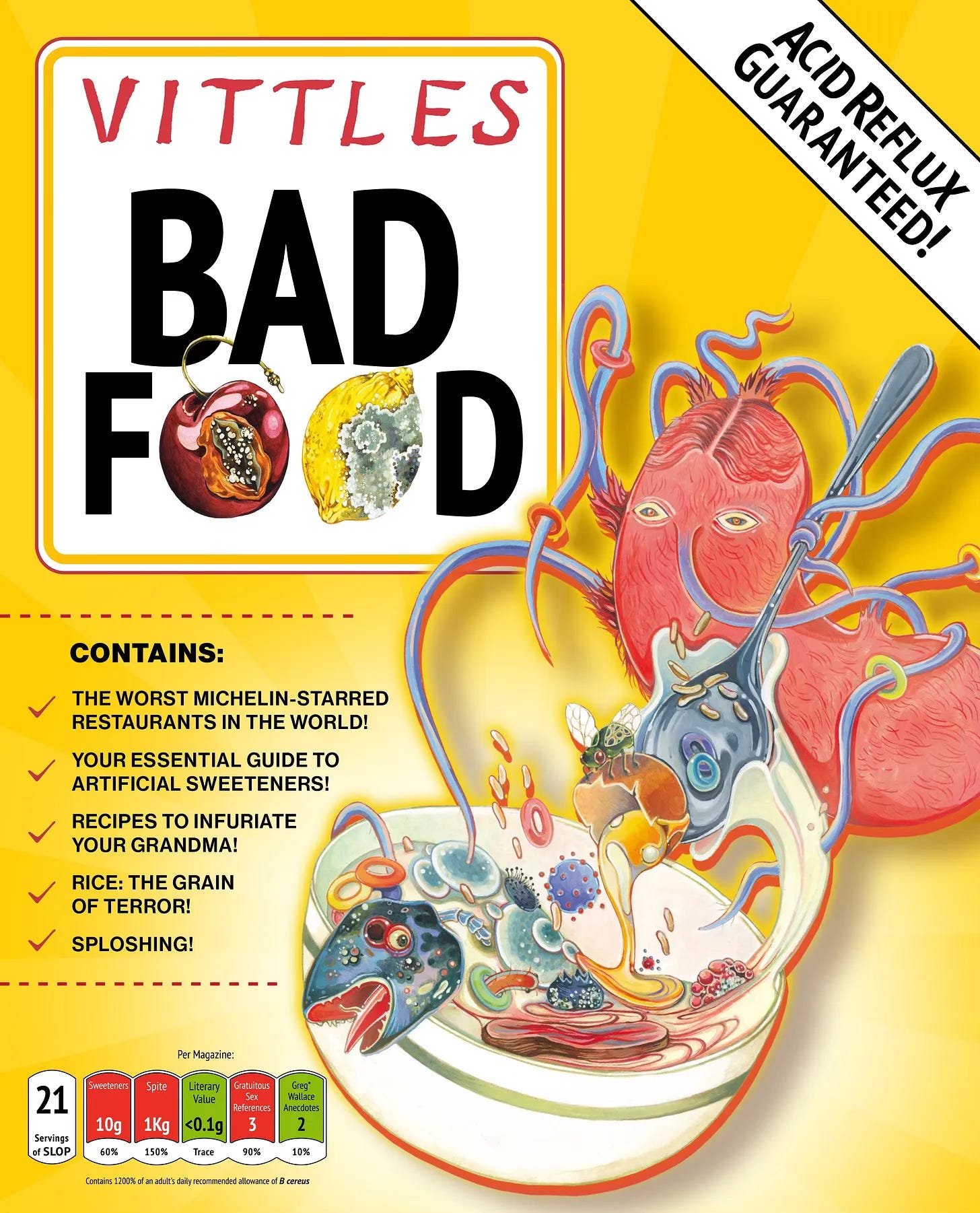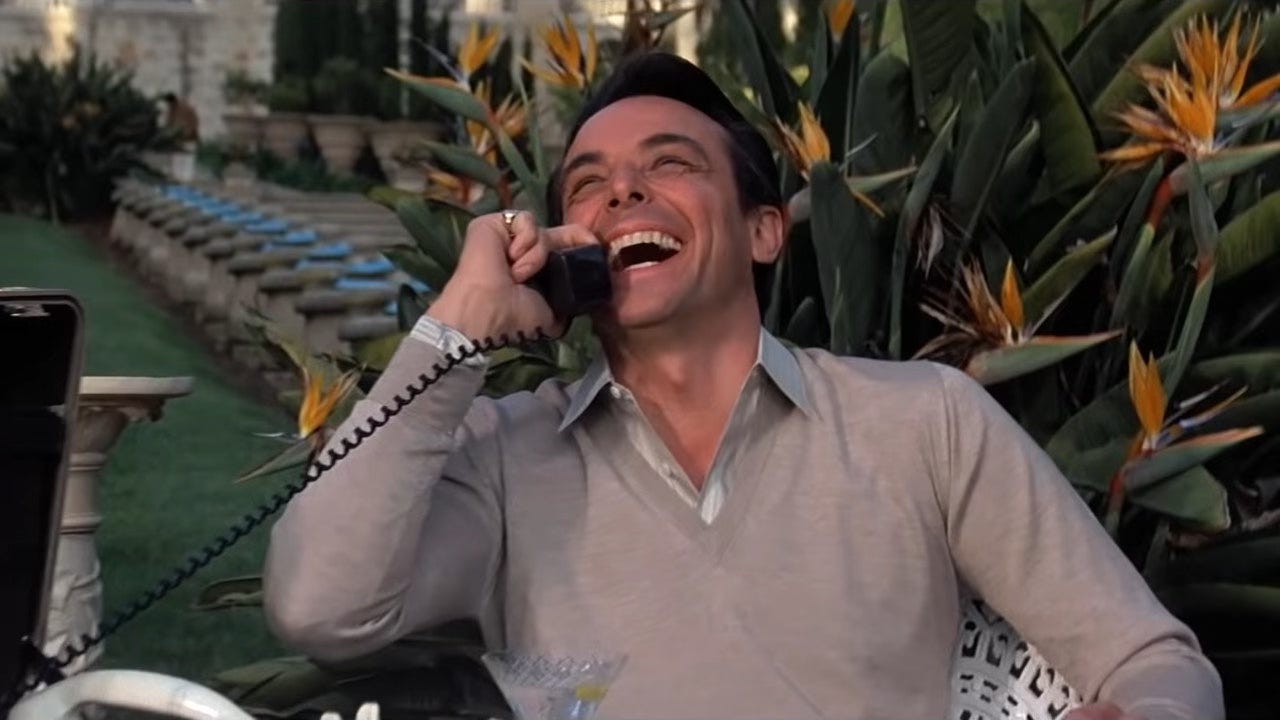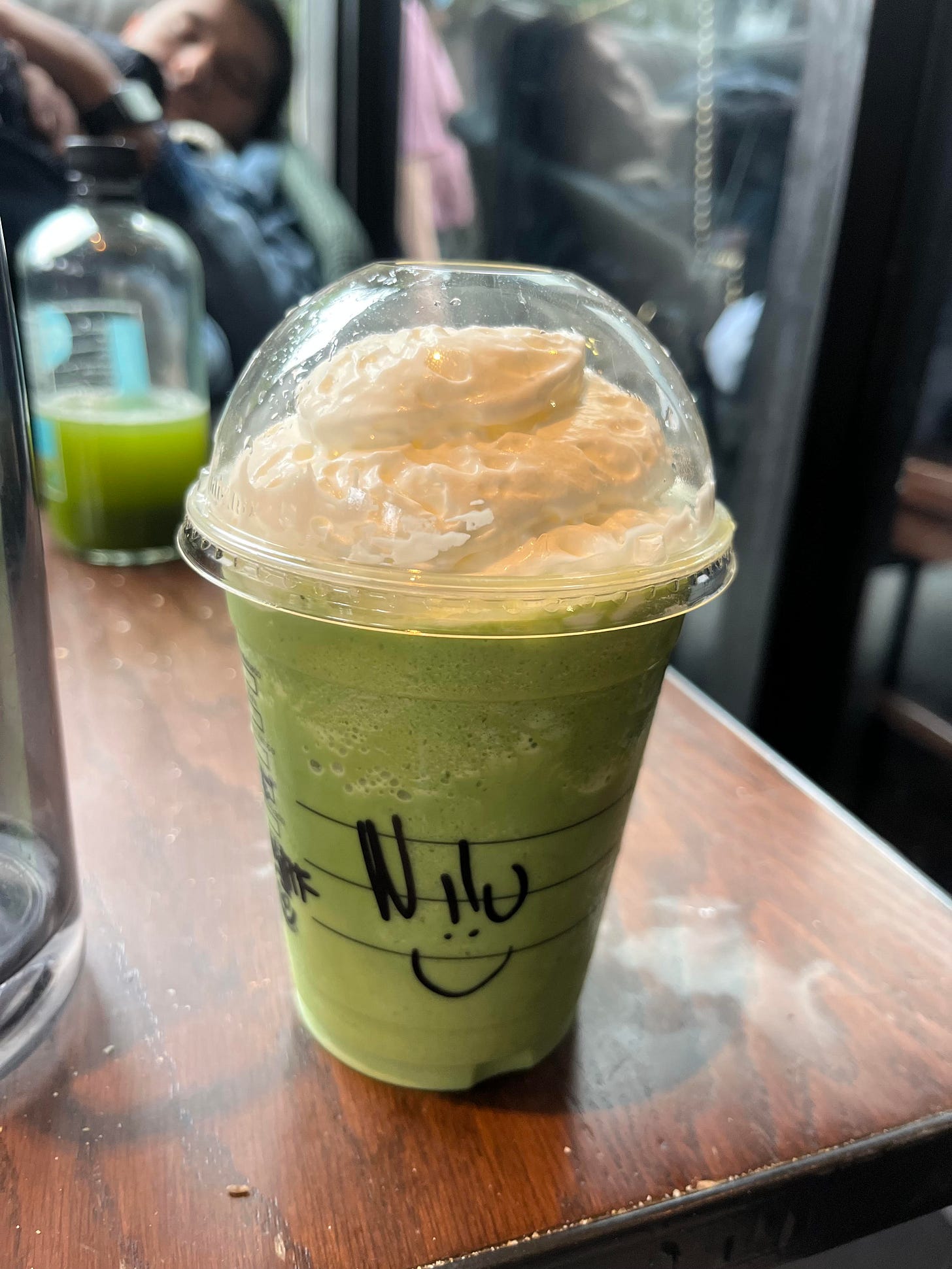acid reflux – matcha special
It’s 7pm on Saturday and you’re at a matcha rave in Dubai, by Niloufar Haidari
Good morning, and welcome to Vittles! This week, we received the first copies of Issue 2 of our magazine! As of this Monday, we will move from pre-ordering to just regular ordering, so if you wish to get the magazine at its discounted pre-order price of £18, with an extra discount for paid subscribers (see the original email for details), then this is the last weekend to order.

In 2018, I saw two visions of the future. Down one path, there was Ohh Cha, the Japanese matcha pop-up that took place inside Muji Tottenham Court Road over the course of two weeks, serving koicha as thick as molten chocolate and usucha of various provenances – the type of matcha that compelled Japan to create kaiseki dining, tea ceremonies and the architecture of the tea house just to put a bowl of it in its right place. Down the other path, was the tin of chilli kale matcha I spotted on a supermarket shelf that promised to ‘destroy hangovers’. Of course, London chose the second path.
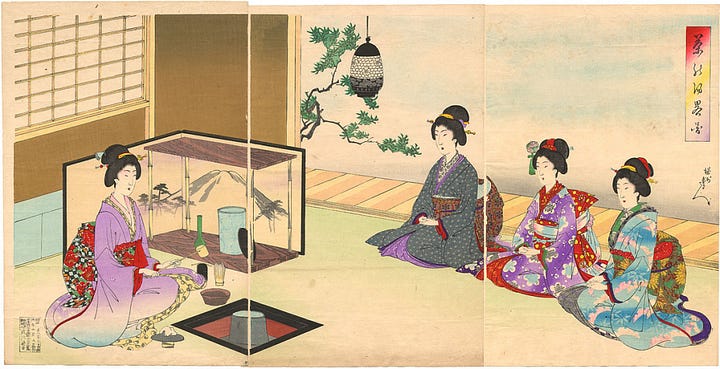
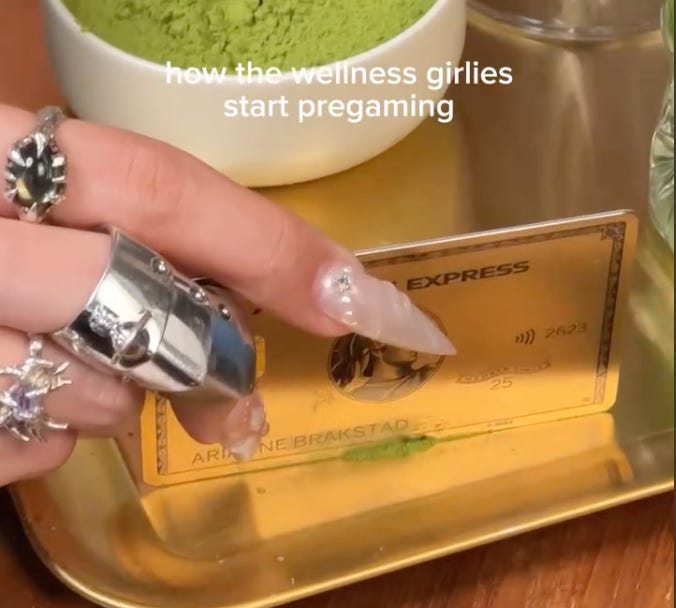
Over the last few years, matcha has taken over London, just as it’s taken over everywhere else in the world. As someone who used to work in the tea industry, and spent the best part of a decade trying to get people to drink good matcha, this has been a strange experience. Matcha is everywhere and people – particularly young people – love it, even if it’s low-grade matcha (and, increasingly, not from Japan, but from China). Meanwhile, the scarcity of matcha has pushed the prices for premium matcha up; from what I’ve heard, in the last year the wholesale cost has almost tripled. Whatever the grade, London has an insatiable need for matcha (note: all of these are real!): Biscoff matcha, Terry’s Chocolate Orange matcha, toffee nut Cream matcha, matcha tiramisu, matcha ramen, matcha hummus, matcha biriyani, matcha milk pedicures and, most ominously, daytime matcha raves.
So, in today’s acid reflux, I’m handing over the column to Niloufar Haidari to explain this pivotal moment in matcha culture on a global scale, and why it just might mean the death of civilisation as we know it. Jonathan Nunn
It’s 7pm on Saturday and you’re at a matcha rave in Dubai, by Niloufar Haidari
It’s 7pm on Saturday and you’re at a matcha rave in Dubai. The afro-house is bumping, ladies are swaying around like Sims, taxes are being evaded. There is much pain in the world, but not on this rooftop. Here there are digital nomads, myopic influencers selling dreams, and Europeans who moved to the UAE to escape the creeping tide of Islam in the West. There are also, for some reason, iced matcha lattes. Two Asians, seemingly the only non-white people in attendance, hand-whisk the green powder and serve it up to the partygoers with pink foam. A posh-looking man in a blue shirt and cream trousers offers a matcha ice cream cone to the camera with a smile and the Dubai skyline behind him. There is a complete dearth of swag, personality and vibe.
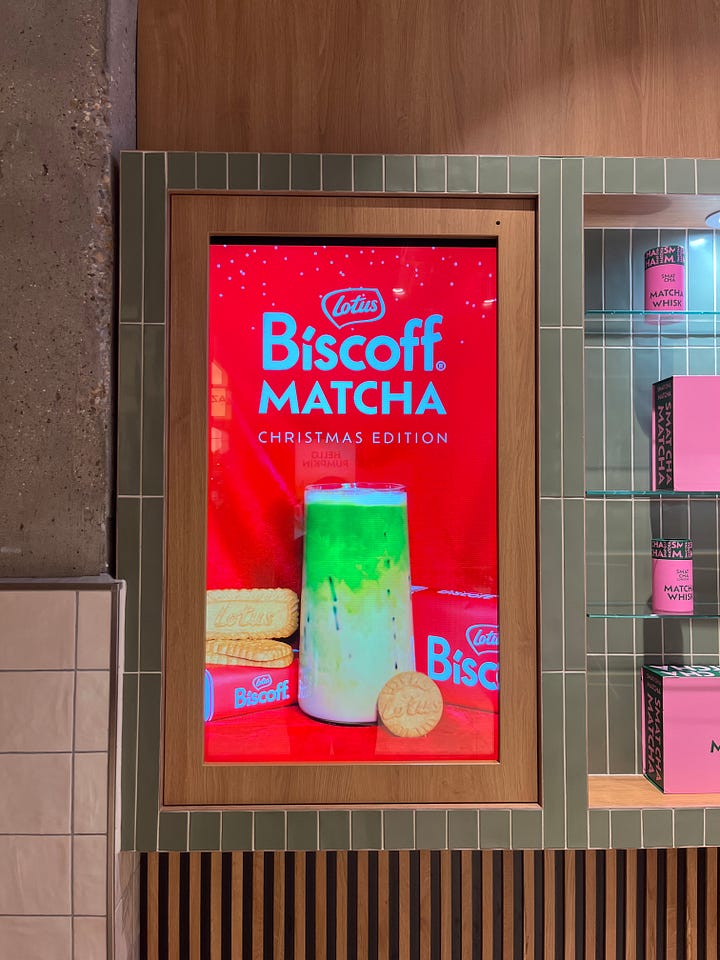

Drinking matcha is obviously not a new practice. Its history in Japan goes back nearly a thousand years, while whisked tea dates back even further in China. Starbucks has been selling (bad) matcha as ‘green tea lattes’ since 2006, the earthy, bitter taste of cheap matcha masked by everything from vanilla syrups to blueberry purées and sweetened coconut milk. But matcha has recently become a status symbol for wealth signalling and wellness culture, propelled in part by ‘aesthetic’ lifestyle TikToks, in which influencers in blush-coloured athleisure pose with matching strawberry matchas at ‘morning wellness raves’.
“Matcha lattes – and memes about them – have become a micro-economy, the beverage of choice for both aesthetic girlies and performative males, two categories of people that mostly only exist online to generate content”
However, such events are not confined to the cursed dropshipper-populated corners of Bali and Dubai. This summer there were matcha raves in Vienna, Madrid, Frankfurt, Perth, Tijuana and Cork. Louis Bekk, a French DJ who seems to have made a career out of playing bad house remixes at pop-up brand activations, allegedly ‘turned the matcha scene on its head’ when he hosted an alcohol-free day-time rave at Marylebone’s How Matcha.
Of course, the reason I know so much about Gen Z green drink culture is not because I think it is a frivolous industry emblematic of impending societal collapse (although it is) but because I myself love this shit. When a matcha spot opened in Brent Cross’s new food court, I was ready to fall to my knees with gratitude at the prospect of finally being able to access a delicious silly little drink anywhere near my home in Neasden – the last place in zone 3 where you still can’t get a half-decent flat white. Its best-selling drink is the peach collagen yuzu; I personally alternate between the vanilla and brown sugar oat milk options, sometimes adding a shot of ashwagandha or bee pollen if I really feel like recreating my experience of the time I lived in LA. I will happily travel anywhere that gives me the option of topping my drink with sweetened cream cold foam, and have on more than one occasion found myself the oldest person in the queue at Jenki, waiting 20 minutes to spend £6.50 on a rose collagen matcha latte just to Feel Something – or maybe to avoid feeling anything at all.



